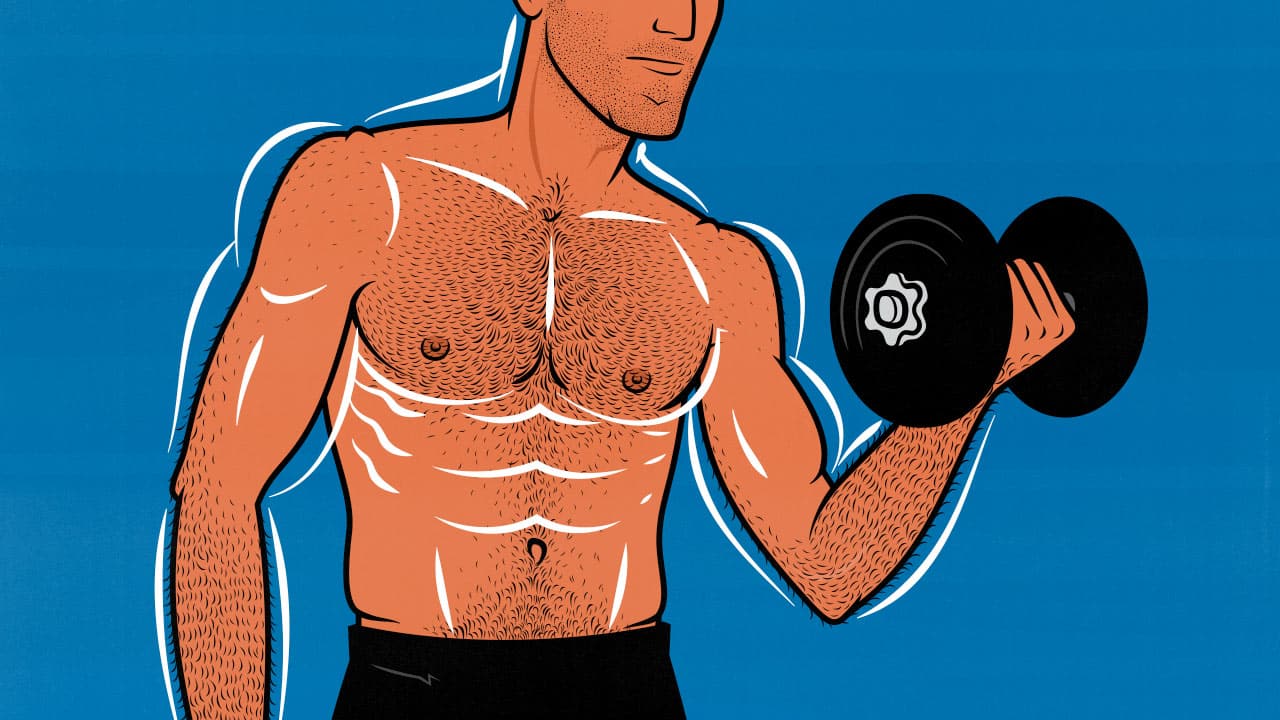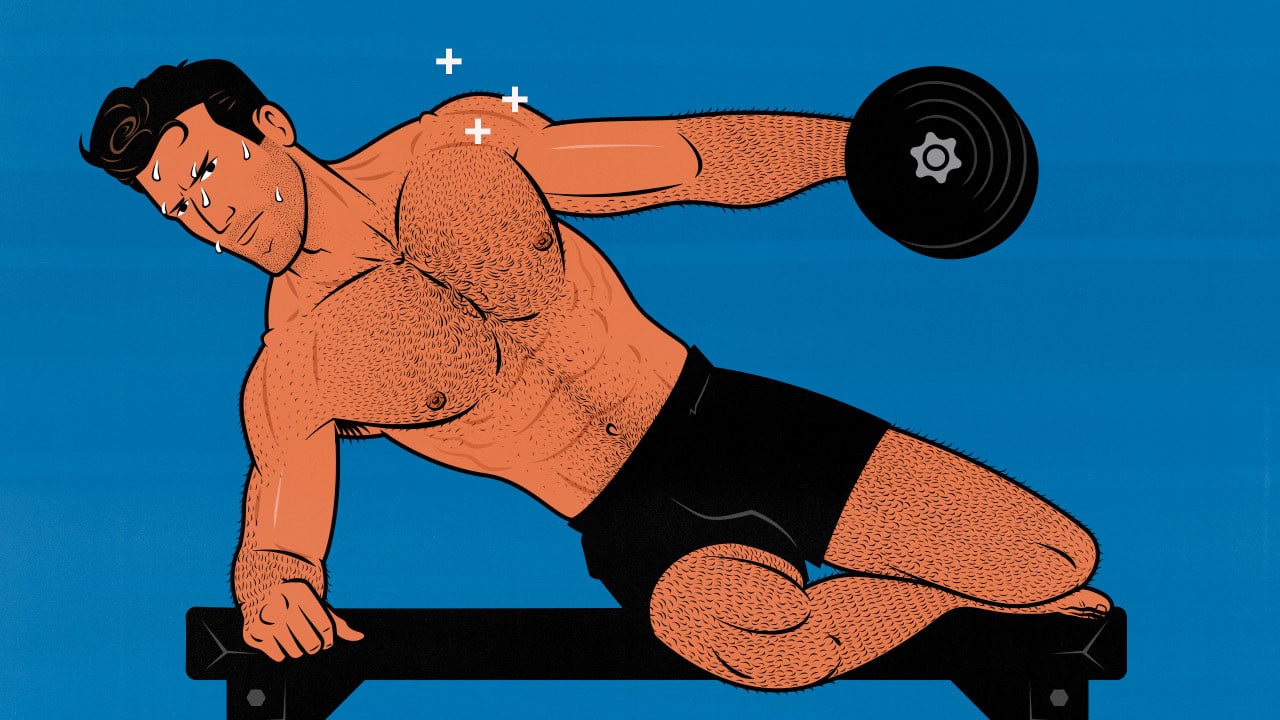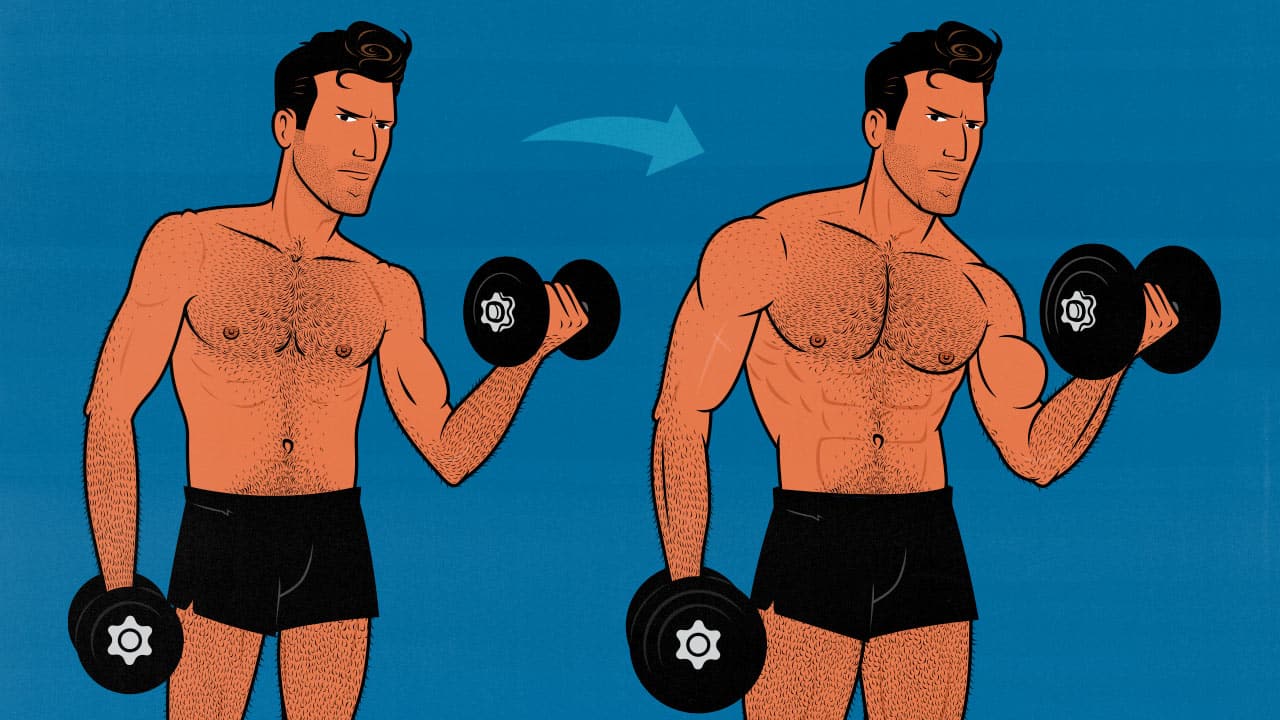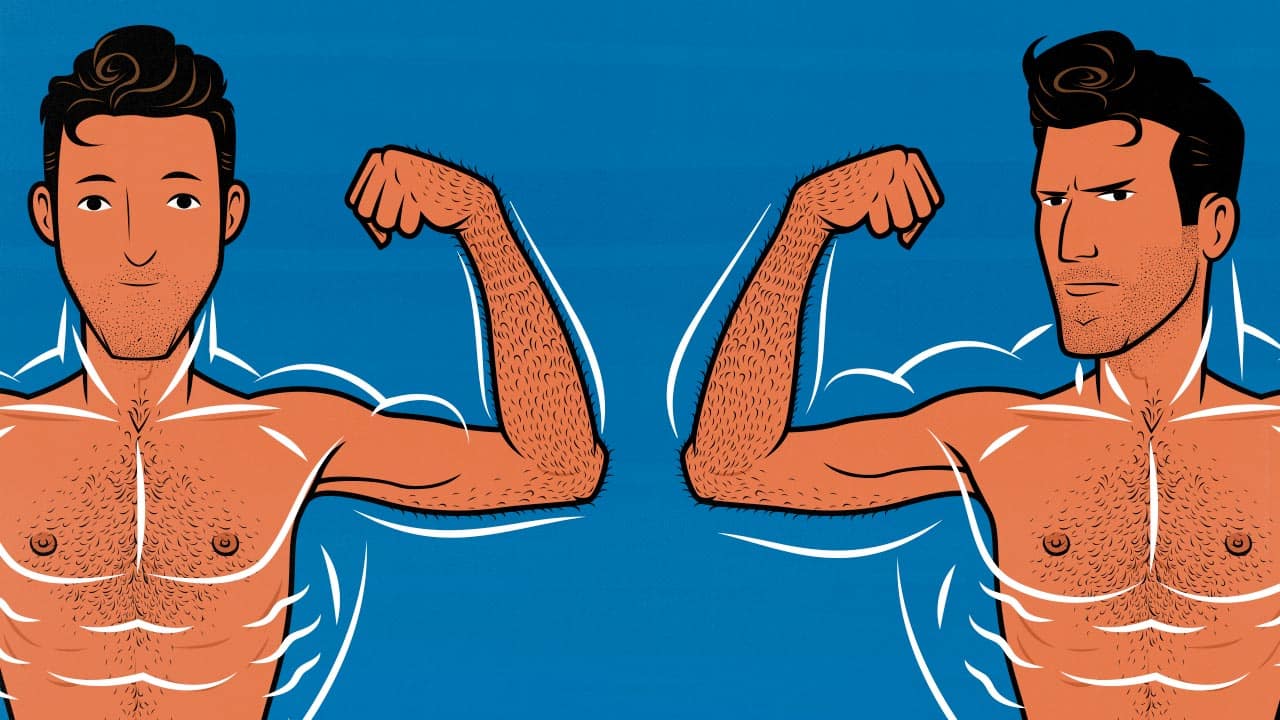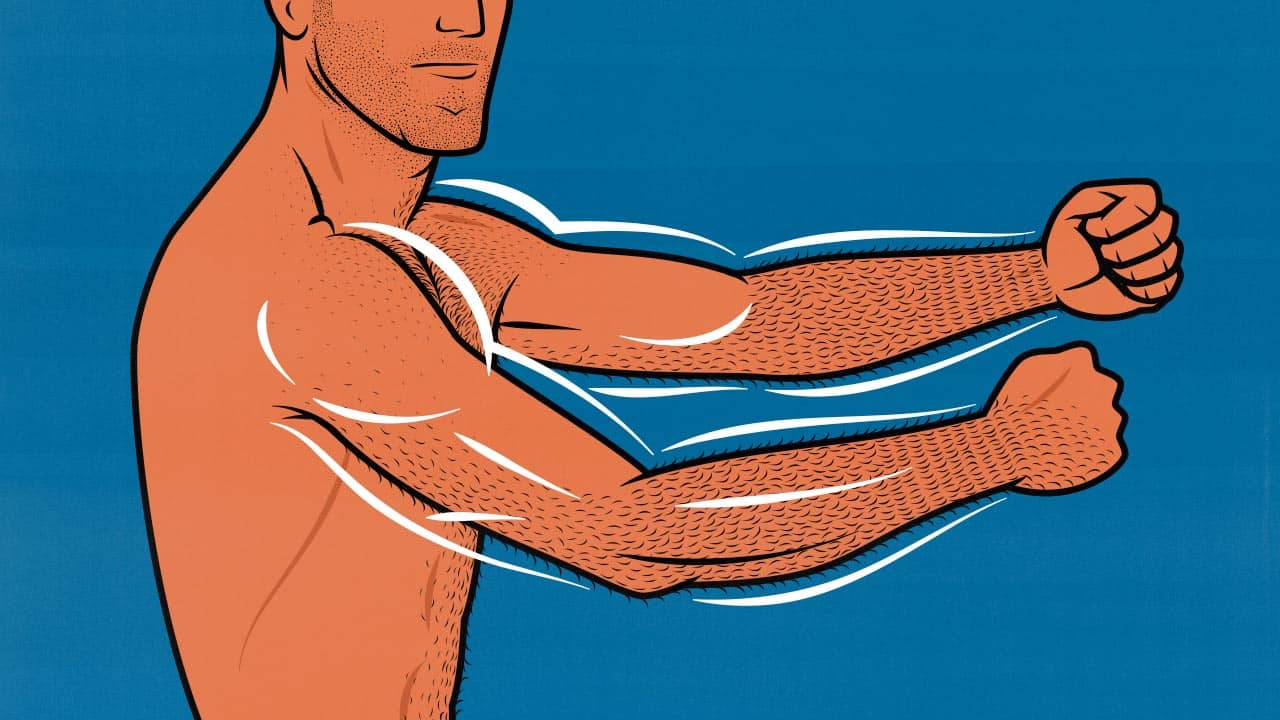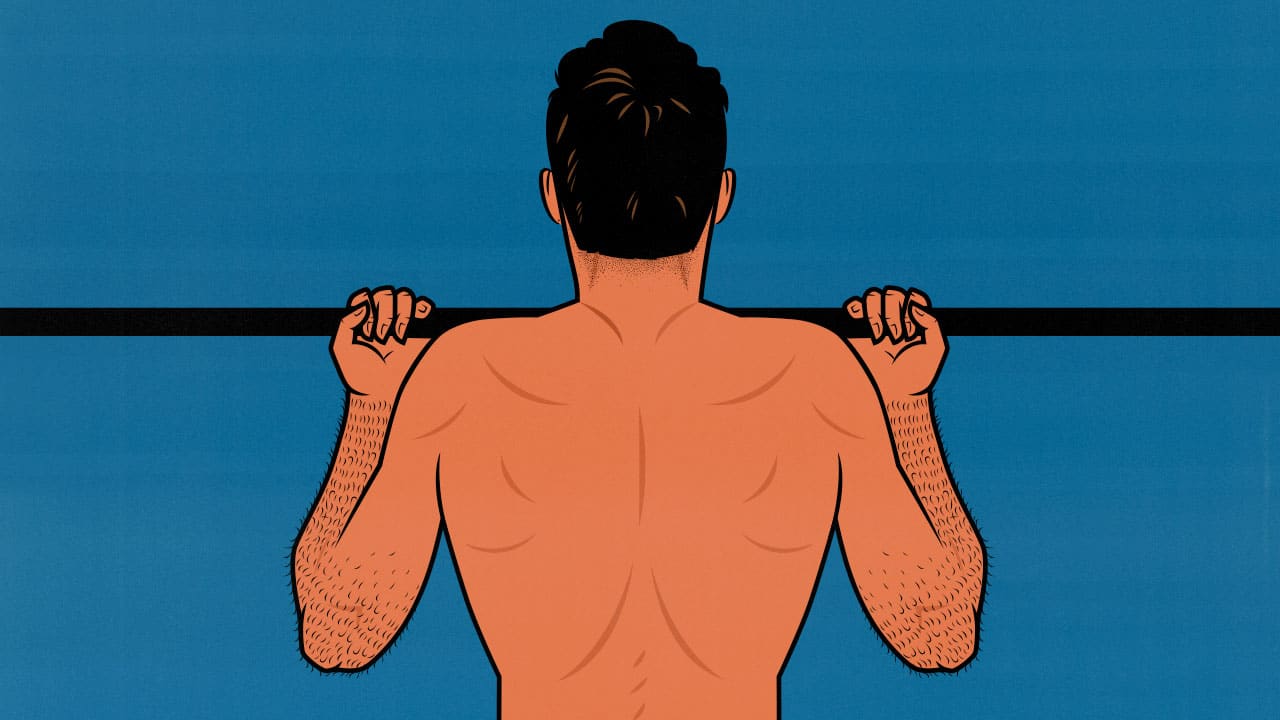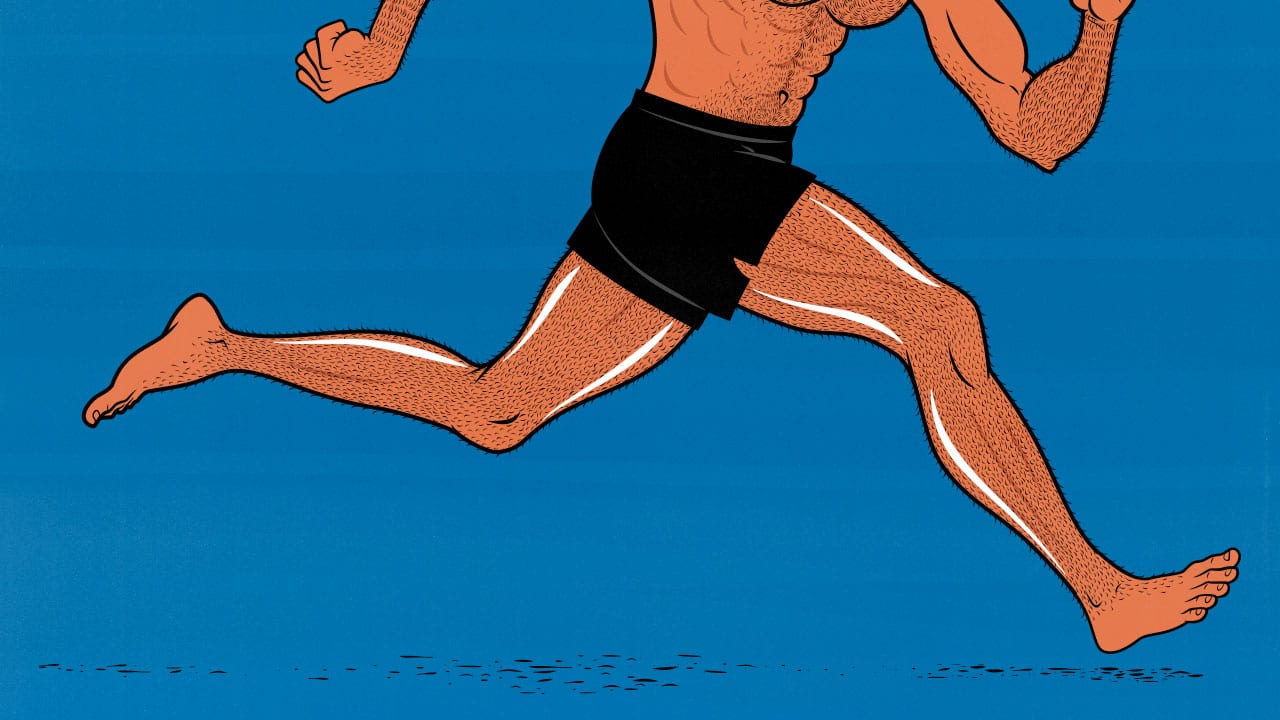Training
Bulking Workout Routine: How to Maximize Muscle Growth
Whether you’re trying to build muscle, burn fat, or do both at the same time, you should be training for hypertrophy—for muscle growth. That’s why bulking, cutting, and body recomposition workouts are usually fairly similar.
Still, bulking workouts are special in three ways:
- More food means more energy and greater recovery. That means you can train harder and stimulate more muscle growth. You could train more often, do more exercises, do more sets, or push closer to failure.
- It might be worth doing more isolation exercises. Your arms and abs get plenty of stimulation from compound exercises, which is often enough to maintain their size and strength while cutting. That makes isolation exercises somewhat optional. But when you’re bulking, you have the opportunity to push it further, training them harder, bulking them up much faster.
- You can scale back cardio. It still helps to be active or do cardio, but you don’t need as much, especially if you’re pouring more energy into lifting weights or having trouble eating enough calories to gain weight.
Plus, it’s even more important to maximize muscle stimulation when you’re bulking. You’re eating enough calories to gain weight, and those extra calories can either be invested into muscle growth, stored as fat, or a mix of both. Thus, the more muscle growth you stimulate, the more of those extra calories will be invested into muscle, leaving fewer to be stored as fat.
Compare that to a cutting workout, where you have less energy, and all you need to do is maintain your muscle size. Maintaining muscle requires far less stimulation than gaining muscle, so cutting workouts can be shorter and easier.
Read MoreHow Many Sets Should You Do Per Muscle Group Per Week?
The latest meta-analysis suggests you can maximize your rate of muscle growth with 10–20 sets per muscle group per week (Baz-Valle). That means in certain circumstances, you can expect to build as much muscle with 10 sets as 20. In other circumstances, going up to 20 sets could stimulate extra muscle growth. Going past 20 probably won’t stimulate even more.
This is a contentious topic. Some people believe it’s better to train harder, for fewer sets, less often. Others believe that there’s no real volume ceiling—that you can benefit from as many sets as you can suffer through.
Right now, the most famous programs use a moderate training volume (of about 8–24 sets per muscle per week), the research supports a moderate training volume, and most experts recommend a moderate training volume (exhaustive breakdown here). It’s also the approach we use when training clients ranging from desk workers all the way up to professional and Olympic athletes.
However, there are quite a few assumptions baked into these set recommendations.
- You’re training for hypertrophy. That means choosing good exercises, using a deep range of motion, doing about 6–20 reps per set, resting at least 2 minutes between sets, and taking your sets to within 3 reps of failure.
- You’re training all the major muscle groups in your body. If we look at studies where people are only training some muscles, then they can usually handle much higher training volumes. For example, the recent Enes study found that people could work up to 52 sets of quad exercises per week, but they were only training their quads.
- The exercise does a good job of working the muscle you’re trying to grow. For example, rows aren’t ideal for the long heads of your biceps, bench presses aren’t great for the long head of your triceps, and deadlifts aren’t the best for the long head of your hamstrings. You’d want to target those muscles with isolation exercises.
- You work up to the volume gradually. A good workout program starts with a lower training volume and gradually works its way higher. For example, you might start with 2 sets per exercise and work your way up to 5 over 4–8 weeks. That saves you from crippling soreness in the early weeks, and it keeps the challenge high in the later weeks. It also builds more muscle (study, study).
That gives us a few things to talk about and a few interesting examples to go over.
Read MoreHow Often Should You Train Each Muscle Group?
Training each muscle group 2–4 times per week can maximize muscle growth while keeping your risk of overuse injuries low. But that isn’t the only way to train. Some workout programs train each muscle group once per week. Some recent research suggests those routines can be just as effective. Or at least that’s how it appears from afar. We need to delve deeper.
Read MoreThe Best Side Delt Exercises Are Weird Lateral Raises
The overhead press is the best overall shoulder exercise. If you want a minimalist workout routine, that’s all you need. If you really want to build bigger side delts, though, it pays to include an exercise that trains them directly.
Lateral raises are the best exercise for your side delts, and they can take you quite far, but you can do even better. Lateral raises are easy to improve upon. Here’s how.
Read MoreShould You Lift More Weight or Do More Reps to Build Muscle?
The top search result for this question is wrong, and it’s bugging me. There’s this old myth that heavier weights are better for building muscle while lighter weights are better for gaining endurance. That’s not quite right.
Both low-rep and high-rep sets can be equally good for building muscle. Anywhere from 4–40 reps per set stimulates a similar amount of muscle growth. Doing 6–20 reps tends to be a little easier and more efficient. Most bodybuilders lift right in the middle, favouring 8–12 reps.
However, different rep ranges provoke slightly different adaptations. The best way to build muscle is to take advantage of both. A balanced muscle-building program will use a mix of heavier weights and higher reps. More on that in a moment.
This begs another question: when you progressively overload your exercises, should you focus on adding more weight or adding more reps? Both can be equally good for building muscle. It all depends on what exercise you’re doing and what you’re trying to accomplish.
Read MoreThe Muscle-Building Workout Plan for Skinny Beginners
Most skinny guys are eager to build muscle fast. I don’t blame them. I was the same way. When I weighed 130 pounds, with a BMI under 17, I was sick of being skinny. I wanted to get out of that situation as quickly as possible.
The best way to build muscle is to lift weights. Most of us know that. But I had just graduated from university with a degree in graphic design, I’d never been active, and I didn’t know a single person who lifted weights. Well, I knew one person who shoplifted, but I didn’t want any part of that. And when you’re that far outside of a subculture, it can be hard to know where to start or what to do.
Since then, I’ve gained 70 pounds, going from a 65-pound bench press to a 315-pound bench press. My business partner, Marco, has helped college, professional, and Olympic athletes bulk up. Together, we’ve spent over a decade helping millions of readers and over 10,000 skinny clients build muscle (naturally).
Fortunately, once skinny guys start following a good workout plan and eating a proper bulking diet, we can gain muscle faster than any other body type. Our frames are empty and eager for muscle growth. Most of us are able to gain 25 pounds within our first 6 months of working out. Some of our clients have gained 40.
In this article, I’ll walk you through the process of training for muscle growth. By the end, you’ll know exactly what to do.
Read MoreHow Often Should You Lift Weights to Build Muscle?
Most guys assume that training more often stimulates more muscle growth. If that were true, then to build muscle faster, you’d train as often as possible—maybe as many as 5 or even 6 days per week. To do any less would be to miss out on muscle gains.
That’s the wrong way to think about it.
Read MoreHow to Build Bigger Arms
I’ve managed to bring my arms from 10 inches up to 16 inches. But I got off to a rough start. During my first two years of successful bulking, I gained 40 pounds at 11% body fat, bringing my bench from 65 to 225 pounds and doing chin-ups with 50 pounds around my waist. Yet, despite my progress, I had only added 2 inches to my arms. My arms were still 1.3 inches smaller than average, and the average man doesn’t even exercise!
That’s when I realized my mistake. I was relying on compound lifts to bulk up my arms. When I finally added proper arm exercises to my workout program, my arms quickly shot up to 14 inches, then gradually climbed to 16 inches. Surprisingly, my bench press started going up again. I was finally able to bench 315.
We’ve used these same methods with over 10,000 skinny clients and millions of readers. If you add these methods to your workout routine, you can expect to add around 2 inches to your arms within the next 6 months. That’s what our clients gain, on average.
Read MoreCalisthenics Vs Weights: Which Builds More Muscle?
Both calisthenics and weight training can stimulate muscle growth. That’s not answering your question, though. Resistance bands, bodybuilding, and powerlifting all stimulate muscle growth. So can cardio. So can flexing your muscles (study).
We’ve helped thousands of people bulk up over the past decade, some using weights, others with pure calisthenics. We’ve seen how their results compare. There’s also research comparing the results people get with calisthenics vs weight training. We can take that into consideration, too.
We don’t have a bias. We don’t sell weights or gymnastic rings. Our brand isn’t built on one approach or the other. We’ve trained both ways. We’re happy to use and recommend whatever gives the best results.
Dive InDoes Cardio Kill Muscle Gains?
Cardio can kill muscle gains. We’ve known this for many decades. It’s common knowledge among lifters and shows up in studies. Most recently, a study found that cardio cut muscle growth in half. We’ll go over the nuance of that study in a moment.
That isn’t normal, though. Most people who combine weight training with cardio build muscle just fine. The latest meta-analysis found that cardio didn’t interfere with muscle growth at all (meta). In fact, I’ve noticed the opposite.
If you’re clever, you can use cardio to build more muscle. We’ll go over some interesting research. It’s something I’ve seen with clients, too. The guys who get the best results are often the ones who get fit while they’re bulking up.
Read More


